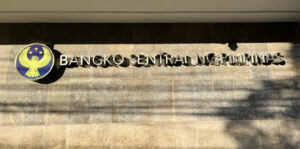THE BANGKO SENTRAL ng Pilipinas (BSP) could cut by another 50 basis points (bps) this year, which would bring the benchmark to below 5% by yearend, Nomura Global Markets Research said.
“We continue to believe BSP has scope to steadily shift to an accommodative stance, as inflation expectations remain well-anchored and domestic demand is still subdued,” it said in its latest Global Economic Outlook.
“We reiterate our call for the BSP to deliver an additional 50 basis points of rate cuts this year, taking the policy rate to a below neutral 4.75%,” it added.
The central bank delivered a second straight rate cut in June, reducing borrowing costs by 25 bps to bring the key rate to 5.25%.
The Monetary Board has now lowered interest rates by a total of 125 bps since it began its easing cycle in August last year.
BSP Governor Eli M. Remolona, Jr. earlier this month said there is room for two more rate cuts this year amid benign inflation.
Nomura expects headline inflation to average 1.8% this year, higher than the central bank’s 1.6% projection.
“Our forecast pencils in CPI (consumer price index) inflation staying benign at 1.4% in the third quarter, before edging up to 2.1% by the fourth quarter, partly on base effects.”
Headline inflation picked up to 1.4% in June from 1.3% in May, but slowed from 3.7% a year ago. This brought the six-month average inflation to 1.8%.
“Our forecast is underpinned by various factors, such as a negative output gap, low crude oil prices and the government maintaining supply-side measures (to keep rice prices low, in particular),” Nomura said.
Meanwhile, Nomura said it is maintaining its Philippine gross domestic product (GDP) growth forecast at 5.3% this year. This falls short of the government’s 5.5-6.5% growth target for the year.
It noted the “disappointing” first-quarter outturn which reflected “soft private investment spending growth.” In the first quarter, the economy grew by a weaker-than-expected 5.4%.
“This, in turn, suggests businesses have already become cautious amid surging global trade uncertainty,” Nomura said.
“The output gap has turned negative, by our estimates, and we expect still-subdued investment spending and slowing export growth due to the impact of US tariffs, including via indirect effects.”
Nomura expects GDP growth to accelerate to 5.6% next year, primarily driven by infrastructure spending. The government is targeting 6-7% growth from 2026 to 2028.
It cited downside risks to growth such as rising global trade and geopolitical tensions while upside risks include a faster rollout of infrastructure projects and lower oil prices.
FISCAL POLICYMeanwhile, Nomura noted the Development Budget Coordination Committee’s (DBCC) latest revisions to its medium-term fiscal framework.
“This matches our forecast and supports our long-held view that DBCC’s targets are challenging due to the government’s prioritization of large infrastructure spending, while revenues will likely underperform, in part because fiscal reforms are now more difficult to enact following the midterm elections.”
At its meeting in June, the DBCC raised its budget deficit ceiling to 5.5% of GDP this year from 5.3% previously and raised its 2026 forecast to 5.3% of GDP from 4.7%.
It also now expects the deficit-to-GDP ratio to reach 4.3% by 2028 from its previous target of 3.7%.
“The government is materially slowing the pace of fiscal consolidation, likely in response to a weakening growth outlook due to external headwinds,” Nomura said.
Meanwhile, Nomura’s current account deficit projection was maintained at 4.1% of GDP this year and 4.4% in 2026.
The BSP expects the current account deficit ratio to hit 3.3% this year and 2.5% in 2026.
This is amid “higher capital goods imports from infrastructure implementation and weaker exports,” it added.
The current account deficit ballooned to $4.25 billion in the first quarter. This brought the deficit-to-GDP ratio to 3.7%, larger than 1.9% a year earlier. — Luisa Maria Jacinta C. Jocson
